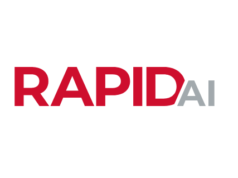 At the European Stroke Organisation Conference, iSchemaView publicly launched RAPID ASPECTS, a digital imaging solution that assists clinicians in assessing early signs of brain ischaemia in stroke.
At the European Stroke Organisation Conference, iSchemaView publicly launched RAPID ASPECTS, a digital imaging solution that assists clinicians in assessing early signs of brain ischaemia in stroke.
RAPID ASPECTS automatically generates a standardised score—based on clinically validated machine learning algorithms—that enables physicians to easily communicate about the extent of a patient’s ischaemic changes and to determine eligibility for thrombectomy (clot removal). In addition, RAPID ASPECTS provides clear visualisation of the brain so that clinicians can better scrutinise each region and confirm the automated score. RAPID ASPECTS is CE-marked for use in Europe.
The original Alberta Stroke Program Early CT Score (ASPECTS) is a manual 10-point scoring system that relies on determining subtle changes in non-contrast CT examinations. This has traditionally required the expertise of an experienced neuroradiologist or stroke neurologist. Yet even stroke imaging experts have been shown to display significant scoring variability in most studies using ASPECTS. RAPID ASPECTS automates and standardizes the scoring process to help clinicians more accurately assess early signs of brain ischaemia.
“In my opinion, using RAPID ASPECTS increases the likelihood of getting a reliable ASPECT score, independent of the individual skills and experience of the clinician. This tool is therefore particularly suitable for primary stroke centres with a smaller number of cases,” said Benjamin Friedrich, docent and physician in the Department of Diagnostic and Interventional Neuroradiology at the Klinikum rechts der Isar in Munich, Germany. “Early and reliable information makes it possible to quickly understand the prognosis of a patient.”
“ASPECT scoring plays a critical role in the treatment of brain ischaemia leading to stroke and is part of the American Heart Association guidelines for use of endovascular therapy in patients who can be treated within six hours of symptom onset,” said Greg Albers, professor of Neurology at Stanford University, Director of the Stanford Stroke Centre and cofounder of iSchemaView. “RAPID ASPECTS elevates the ASPECT scoring system, by providing clinicians with more reliable and reproducible scores and powerful visualisation tools to support treatment decisions.”
RAPID ASPECTS receives data from standard CT scanners, tilt-corrects the images and identifies the ASPECTS regions. A sliding confidence indicator allows the physician to scrutinise suspicious regions and determine a final score. Moving the confidence slider to the left identifies additional regions that may potentially be involved, while moving the slider to the right removes regions with more subtle differences.













